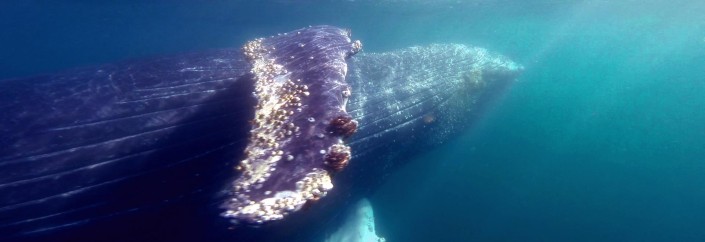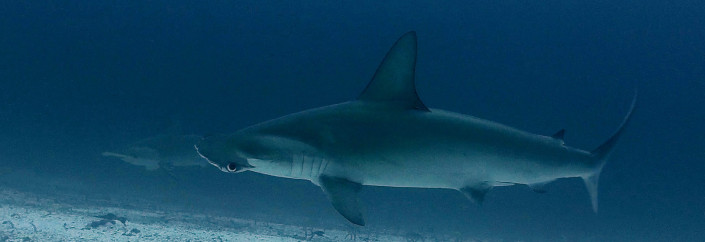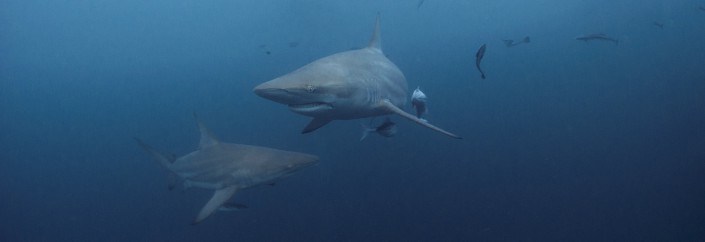
It’s Sunday morning, day one. The alarm clock shows 6.00 am and its beeping makes it very clear that it’s time to get up. It’s still dark outside, the coffee fragrance is in the air leading us to the breakfast lounge of the Umkomaas lodge; a few muffins satisfy the stomach and get us ready to go. The equipment is all set-up, the wetsuits are on and the boat is loaded. It’s not often to see people getting up before dawn with a smile on the face, but when your early wakening anticipates two dives packed of sharks, then the perspective totally changes. The launch with our speedboat is still the same: hold on tight, put your feet in the straps and the jumping and slalom between the waves kicks the day off. The first dive is a baited dive, but not before having attracted a few dozen blacktip sharks around the boat. We kit-up and with a rollback we are in what looks more like a shark soup then a place in the Indian ocean. The washing machine drum full of smelly fish hangs at an eight meter depth and we’re looking all around at the blacktips getting crazy…




